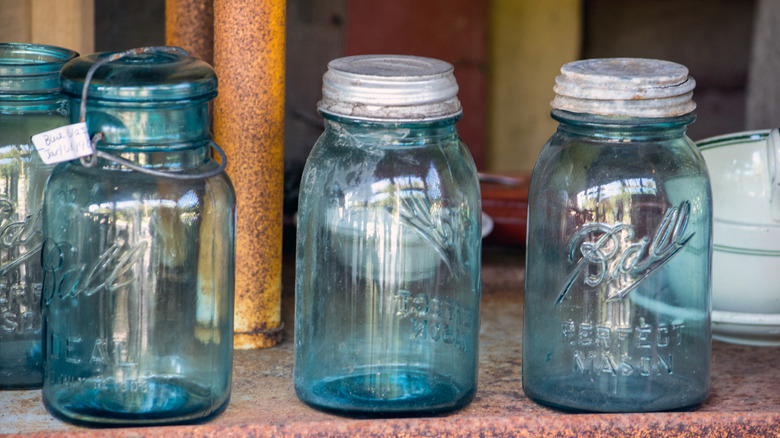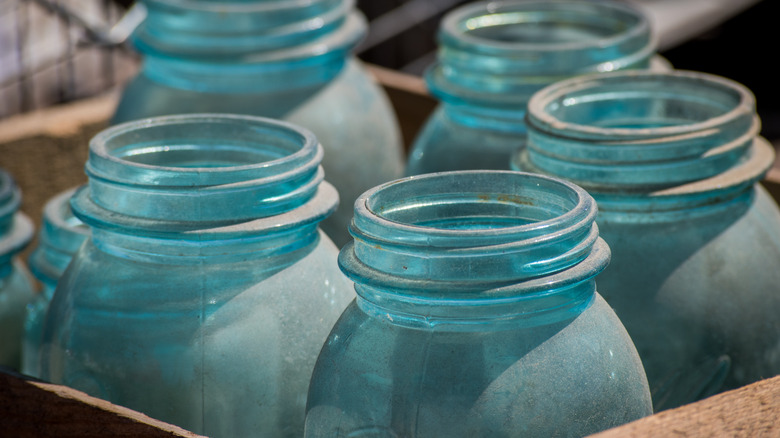If Your Old Mason Jars Are Stamped With This Number, They Could Be Worth Big Bucks
There's something to be said about a good mason jar. Whether they're displayed on a shelf, used as a vase for flowers, or serve as a drinking glass, mason jars are an eye-pleasing aesthetic for collectors and casual owners alike, especially those produced by Ball. And if your Ball mason jar is vintage, there's a chance it could be one kitchen container that's worth some big bucks. Not all old mason jars will fetch a big price tag, but a Ball mason jar from the 1920s with the number 13 stamped on the bottom can be something valuable, thanks to the legend surrounding it.
During the Prohibition Era, moonshiners would often transport their then-illegal product in mason jars. However, they believed that the number 13 to be unlucky, and would smash any jars with this stamp on the bottom. The level of truth behind the story is difficult to gauge, but the story is a good one, and it makes mason jars marked with the number 13 seem especially rare and special. A Ball mason jar with this unlucky (or lucky, depending on who you ask) number can sell for a wide range of prices, but some can fetch hundreds of dollars online with the right buyer.
How to tell if your Ball mason jar is actually an antique
The actual history of the mason jar predates the Civil War, when the Ball Corporation was founded by five siblings in 1880. With so many decades between then and now, finding a Ball mason jar that fits the bill of the moonshine story can be tricky. But how can you be sure if your number 13 mason jar is from the 1920s? The color of the glass is often helpful. Ball produced blue glass jars until 1930, when it switched to clear glass. There were also two different logos used during the 1920s; both logos are in script, but with slight differences, such as a missing underscore.
In addition to the logo, many Ball mason jars were imprinted with phrases like "Square" (for square jars), "Improved," "Perfect," and "Ideal." The jar's lid may also hold a clue as to its age; many older mason jars had a two-piece lid with a white "milkglass" sealer. Older mason jars will have another tell-tale sign of age in their imperfections, which are due either to seams or air bubbles in the glass or from the mason jar being stored improperly for years. With so many signs to look out for, it can be relatively easy to find old Ball mason jars, but if you find one with the lucky number 13, you'll have yourself a good story and, quite possibly, a large price tag.

